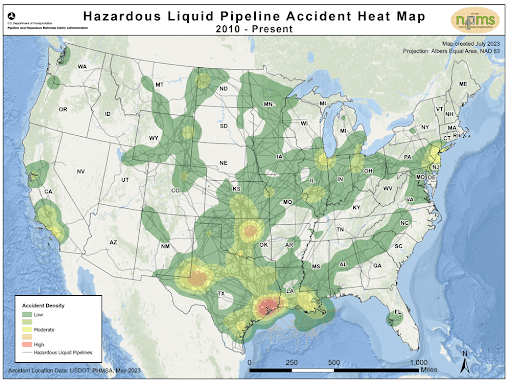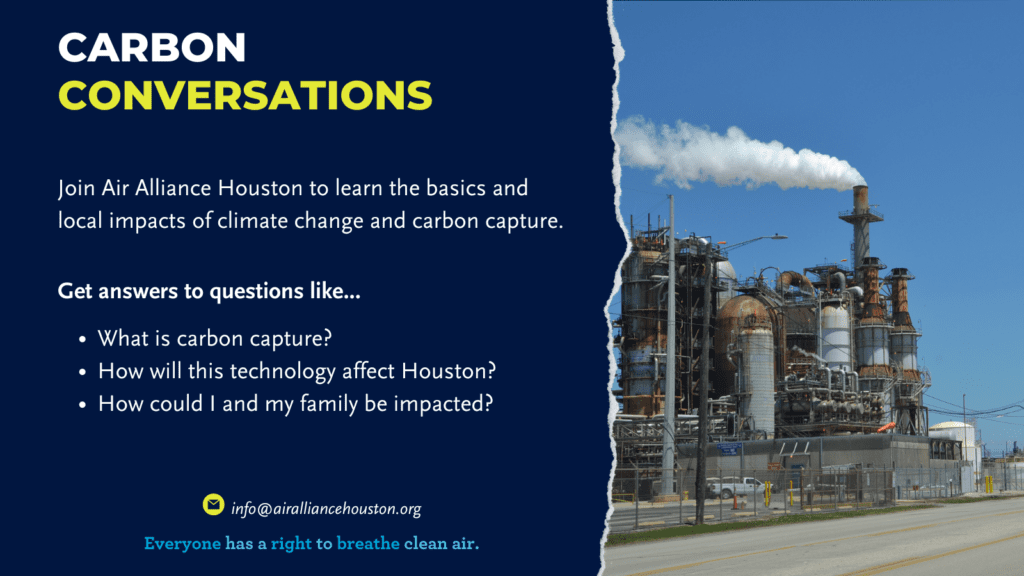
Alexander Spike
Climate Justice Coordinator (Carbon Management)
Climate Change is Underway
The primary driver of recent climate change is human activity, specifically the release of greenhouse gasses into the atmosphere such as carbon dioxide. These emissions primarily come from burning fossil fuels such as coal, oil, and natural gas for energy and transportation.
Each year, human activities release more carbon dioxide into the atmosphere than natural processes can remove, causing the amount of carbon dioxide in the atmosphere to increase. This imbalance causes climate warming, which then leads to extremes such as extended drought, sea level rise, severe heat, and major weather events.
The cost of climate change is coming in dollars and cents as the crisis develops. Hurricane Harvey (cost just north of 120 billion dollars), or Winter storm Uri (80-130 billion dollars in damages). Houston has suffered 45 days of 100+ degree weather. Sea level rise and land subsidence is contributing to rising home insurance prices along the Gulf Coast region. Heat stress, arctic blasts, erratic weather are disrupting the growth cycle of crops.

Climate Change and Houston’s Energy Industry
Greenhouse gas emissions from growing industrial sources have made it next to impossible for the United States to meet the terms of our Paris Climate Agreement. With heating already at 1.2 degrees celsius, we’re running low on time to meet the Agreement’s goal of keeping heating under 1.5 degrees.
Even though the United States no longer leads the world in total annual carbon dioxide emissions, it was still, as of 2021, releasing about 5 billion metric tons of carbon dioxide per year, which was about 13.49 percent of the total global emissions—more than twice that of all 28 countries in the European Union combined. Those emissions will continue to drive global warming. Combined with the contribution that past U.S. emissions have made to warming to date, any future U.S. emissions will undermine progress to stop global warming.
Michon Scott – Climate.gov
In Houston, the energy and industry sectors, including facilities like the NRG’s W.A. Parish Coal Plant, account for almost half of all emissions contributing to the climate crisis. These sectors have historically been associated with regular releases of air pollution, fires, and explosions, and irresponsible dumping in communities, posing threats to health and safety.
Carbon Capture and Storage: What is it?
Carbon Capture and Storage (CCS) is a technology that promises to mitigate climate change by capturing carbon dioxide (CO2) after burning the fossil fuel. CO2 is captured (‘scrubbed’) from the exhaust (or ‘flue’) gasses on a refinery or power plant or during a flaring event before it reaches the atmosphere and causes warming. The captured carbon dioxide can then be used in two main ways: Permanent Sequestration and Enhanced Oil Recovery.
- Permanent Sequestration: This involves taking the CO2 and storing it underground in a well or some kind of natural structure like rock formations. The Texas Gulf Coast is seen as a ‘great’ storage space due to the underwater rock formations that form caverns. Contrary to what the name implies, this is not a permanent solution. The pipes being proposed to be built to transport the CO2 have proven to be dangerous and have exploded.
- Enhanced Oil Recovery (Fracking Technology): This involves repurposing the CO2 as a liquid then injecting it to extract oil from wells that were no longer producing oil, allowing companies to feed the fossil fuel economy. Poor regulatory oversight has contributed to seismic activity, well blowouts, water contamination risk, and more.

Both types of CCS require wells, pipelines, and underground injection. Pipelines have suffered from ground subsidence, experienced stress and exploded. Although engineers can design high quality, robust pipelines, climate change will create more subsidence and contribute to increased risk of catastrophic failure.
Risks and a Call for Transparency
The Houston area is fast becoming the next hub for carbon capture and storage. What could this mean for our communities?
The buildout of carbon capture may provide short-term benefits, but the technology comes with long-term risks. The storage of carbon would carry permanent, inter-generational risks to communities, ecosystems, land, water, and the climate. It also does not require industry to reduce its carbon or other air pollution emissions from the beginning, which would be beneficial to air quality overall. All this in a regulatory ecosystem with an abysmal record on protecting communities.
Before CCS takes over our region, we need transparency from developers on what is getting built, where, and for what purpose. Firms that promise to deploy this technology have not shown that it works in practice (e.g. the Petra Nova Project at the W.A. Parish coal plant in Fort Bend) and residents do not trust state regulators to keep industry honest or safe. If CCS is used to perpetuate the fossil fuel economy via fracking, then communities already used to being ignored will be harmed further. We need a detailed safety and risk assessment for each proposed CCS project with catastrophic failure emergency plans.
Check out some of our other Carbon Capture information and content:
-
- Close Parish Coal: How the Dirtiest Coal Plant in Texas Harms Public Health and the Environment; and the Alternatives for Fort Bend|Cierre de la planta de carbón de Parish: Los perjuicios que la central de carbón más sucia de Texas causa en la salud pública y el medio ambiente y las alternativas para Fort Bend
-
- Summary Sheet: What Houstonians Need to Know About Carbon Capture | Ficha resumen: Lo que los residentes de Houston deben saber sobre la captura de carbono


